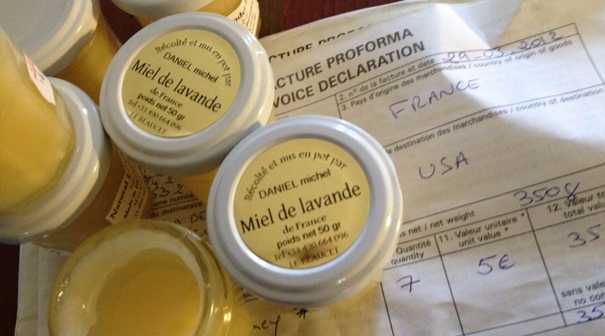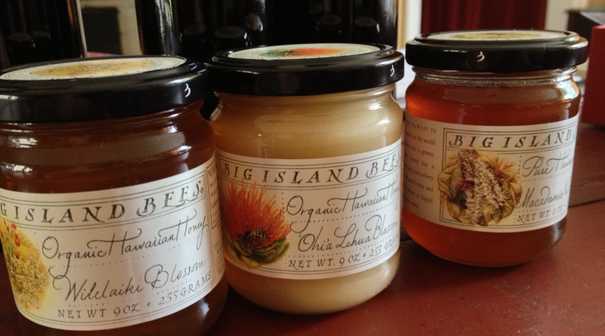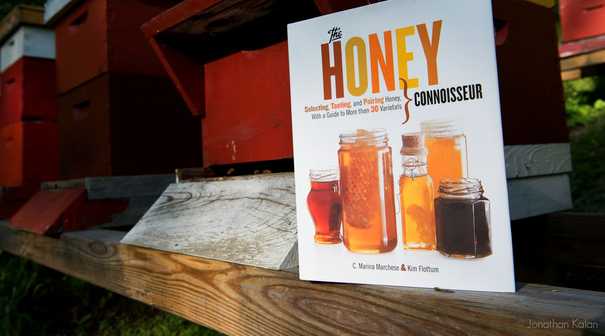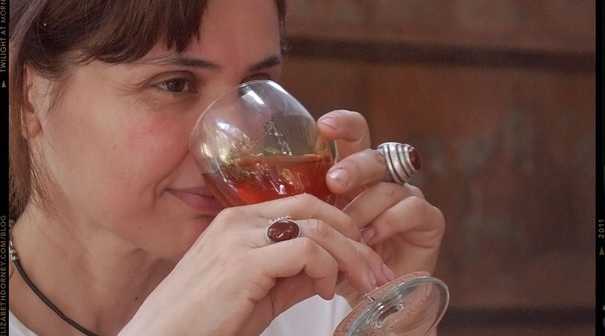5 Honeys You Must Taste Before You Die
Like most sweet loving Americans, I grew up drizzling honey from a generic plastic bear. We used it on rare occasions over oatmeal but most often as a last resort, in tea with lemon when I was bedridden with a cold. I rarely gave the syrupy sweetener any thought like where it came from or how bees actually make it. Honey was an after thought that lived in darkest part of our kitchen cupboard and when it crystallized, we simply thought it had spoiled and tossed it in the trash.
Everything I knew about honey changed 15 years ago when a neighbor invited me to visit his honeybees. I was both thrilled for the opportunity and terrified of being stung but intuition told me that this was an edgy adventure not to be missed. On that memorable day in April, I was handed a beekeepers protective helmet then awkwardly followed Howland through his gardens to his beehives. I stood next to him in awe as he smoked the entrance of the beehive then with bare hands lifted the lid off of to unveil thousands of rather peaceful honeybees.
Without hesitation, he removed a wooden frame of honey covered with even more bees. He instructed me to stick my finger into the honeycomb to taste some honey. Cautiously, I poked a hole into the wax and watched the amber liquid ooze down the frame. I scooped up a fingerful and raised it to my mouth, my life would never be the same.
I luxuriated in the layers of flavors as the honey hugged my tongue like a cozy blanket. It was light and delicate, fresh and flavorful, nothing like the medium amber liquid in the honey bear of my childhood. From that moment on I realized that all honey was not created equal and so my love affair with honey began. Like, wine, olive oil, cheese or chocolate, honey is an agricultural product, it begins in the fields where flowers are blooming.
Honeybees gather nectar from the most appealing flowers to make delicious honey. Its color, aroma and flavors will change throughout the season and every year depending upon the region, the climate and the type of flower a honeybee visits. Wine makers call these ever-changing environmental factors "terroir." Think lavender honey from France or tupelo honey from Georgia, these honeys harvested from a single floral source are called varietals and the sensory qualities of these honeys simply cannot be replicated in other terroir.
Every drop of honey is truly a taste of the particular place it was harvested. The diverse flavors of honey range from fruity, floral, grassy, woody or smoky (refer to our Honey Aroma and Tasting Wheel) dependent upon the floral source and where you are in the world. I now know that commercially made honey bears do not express terroir.
Luckily for us foodies who love to travel, honey is produced in every state in the U.S. and every country (except Antarctica) establishing it as a local food to pursue when traveling. Honey is considered a valuable commodity, which is highly respected in many countries. It is not uncommon to find this ancient delicacy at farmer’s markets, on cheese boards at local restaurants and occasionally at airports gift shops.
However it is the local beekeepers that are offering the authentic honey tasting experience. They often set out their honey alongside of the road using the honor system but if you happen to be lucky enough to meet the maker, I can promise you they will be tickled to give you a tour of their apiary and a taste of their latest honey harvest. Take them up on it, I promise you’ll be smitten. There are over 300 different varietals of honeys produced in the United States alone and thousands more around the world. I have chosen 5 honeys worth going out of your way to taste on your food travels.
1. Fireweed honey of the Pacific Northwest
Fireweed honey can be found growing in places where nothing else will grow after a wildfire has taken down all living plants. This attractive plant regenerates the soil and is native to the Pacific Northwest and Alaska. Honeybees are highly attracted to bright magenta flowers and produce a mono-floral honey that is as pure as you can get. Considered a premium honey because of its absolute transparent color and slow crystallization – anything darker is not pure fireweed. Look for the signature greenish hue and revel in its brown sugar, vanilla and cooked fruity flavors. Mix fireweed honey into a lemony glaze to finish off grilled salmon or shrimp. A perfect compliment to salad dressings and custards.

2. Leatherwood honey of Tasmania
Leatherwood trees are endemic to the pristine rain forest of Tasmania. They have showy white flowers that give off a sweet aroma, which charms honeybees to visit and produce this legendary honey. Beekeepers remain with their bees during the entire bloom then truck thei r bees back for the harvest. The leatherwood trees are under threat due to the logging which puts the honey at risk. A true honey connoisseur can appreciate leatherwoods devilish flavors that take you back to the very forest it was made. Balsamic notes mingle with licorice, damp wood and evergreen. Generously drizzle leatherwood honey over a Tasmanian King Island blue cheese and biscuits.
3. Ohi’a Lehua blossom honey of Hawaii
Ohi’a Lehua blossom honey is one of the many organic honeys found on the islands of Hawaii. These islands enjoy the luxury of existing away from areas that introduce chemicals into their agricultural products, thus producing a clean organic honey. Ohi’a Lehua blossoms are bright red and spiky which produce a white honey that naturally crystallizes into a heavenly stiff cream that can hold up a spoon. Fruity and earthy flavors of vanilla and mushrooms will delight your senses. Ohi’a Lehua is perfect for making a honey butter to spread on the local sweet or fried breads, add cinna mon for an exciting dimension.

4. Sourwood honey of the Appalachin Mountains
If Tupelo honey is the champagne of all honeys then Sourwood honey is the Cadillac. Internationally award winning pure Sourwood honey can only be harvested in the Appalachian Mountains because that’s where the sourwood tree grows. Highly sought after, this honey commands premium prices not only because of its unique flavors but the scarcity of it. Sourwood produces nectar inconsistently and when it does beekeepers sell it in small jars with high price tags. The purest sourwood is light in color and often sold with a piece of honeycomb in the jar. Yes, this is considered a delicacy and you can eat the wax. Complex warm notes of anise, molasses and licorice. Drizzle sourwood honey over grilled peaches, blue cheese and fresh figs and pecans. Mix into a dark rum daiquiri and finish with a sprig of mint.

5. Corbezzolo honey of Sardinia
Corbezzolo honey is not for the faint of heart, you will love its racy flavors or simply race in the other direction. Harvested from the strawberry tree on the Italian island of Sardinia, corbezzolo honey is affectionately known as the bitter honey, to put it mildly. The bell shaped flowers hang in lines and resemble lily of the valley. Sniff before you taste, this honey is medium amber in color with strong bitter notes meeting pleasant coffee, and smoky ashes. Corbezzolo honey is a true food experience worth trying once. Pair this honey with a local ricotta, mascarpone or robiola cheese and a glass of the local white wine, Tuvaoes, Giovanni Cherchi.
6. About Marina Marchese
Marina Marchese is the founder of The American Honey Tasting Society the visionary behind the brand, Red Bee® Honey. In 2013, Marchese co-authored with Kim Flottum (author and editor of Bee Culture magazine) The Honey Connoisseur: Selecting, Tasting, and Pairing Honey, With a Guide to More Than 30 Varietals the definitive guide to the terroir of American honey. Previously, her internationally best selling memoir, Honeybee: Lessons from an Accidental Beekeeper chronicles Marina’s entrepreneurial journey into beekeeping and honey.


